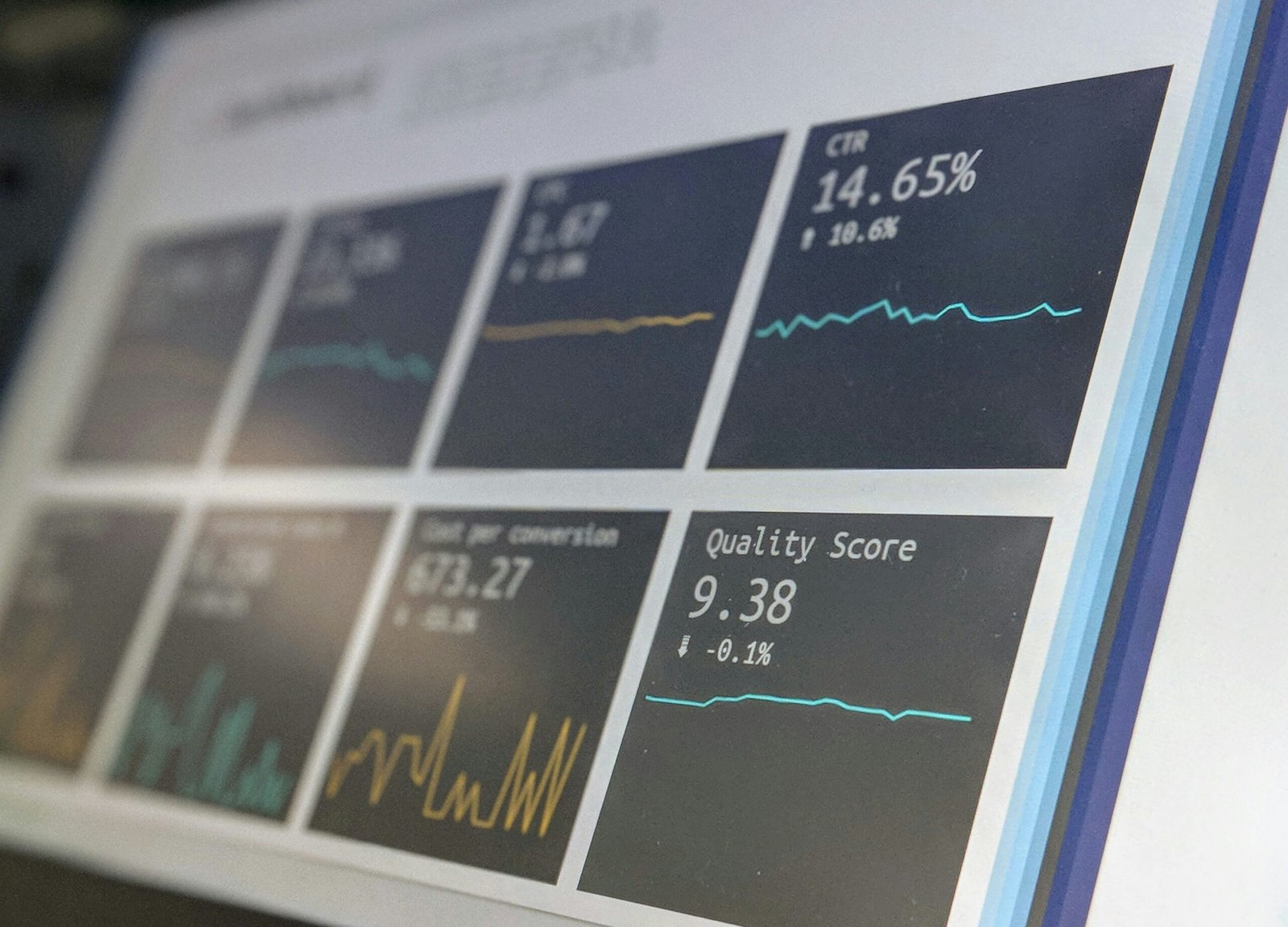| Investment Type | Risk Level | Recommended Hold Time |
|---|---|---|
| Blue Chip Stocks | Low-Medium | 5+ years |
| Growth Stocks | Medium-High | 3-5 years |
| Index Funds | Low | 10+ years |
What Are Blue Chip Stocks?
Blue chip stocks are shares in large, well-established companies known for their reliability and ability to generate steady income. These stocks typically boast a low to medium risk level, making them a popular choice for conservative investors. If you’re considering investing in blue chip stocks, a recommended hold time of around five years is often advised. This allows for potential capital appreciation and dividends to accumulate, helping you achieve long-term financial goals.
The Appeal of Growth Stocks
In contrast, growth stocks present a medium to high risk level and are suitable for investors looking to capitalize on rapid company expansion. These stocks often lack dividends, with profits reinvested back into the business for growth opportunities. For those willing to accept the fluctuations that come with growth stocks, a hold time of three to five years presents a balanced approach, aligning potential returns with time in the market.
Index Funds: A Safer Option
For individuals seeking a lower-risk investment, index funds are a commendable choice. Designed to mirror market performance, these funds provide broad exposure to a diverse array of stocks. With a risk level categorized as low, index funds are particularly appealing for long-term investors. A recommended holding period of ten years allows investors to ride out market volatility and capitalize on compounding returns, making it an ideal strategy for retirement savings.
Investment Fundamentals

Investing in financial markets requires a solid understanding of investment fundamentals and market basics. Knowledge of stock exchanges, trading hours, order types, and market indices is crucial for any aspiring investor. This article aims to provide essential insights to help you navigate the complex world of finance.
Setting Up Your Investment Account
Before you can start trading, you must choose a broker and complete the verification process to set up your account. Selecting the right brokerage is vital, as it influences your investment experience. Factors to consider include fees, ease of use, and available tools. It’s important to fully understand the fees associated with your brokerage to avoid unexpected costs during your trading journey.
Understanding Market Dynamics
Once your account is set up and funded, you’ll need to grasp the market dynamics, which often revolve around stock exchanges and their trading hours. Moreover, familiarize yourself with order types—such as market orders and limit orders—to execute your trading strategy effectively. By comprehending how to read market indices, investors can gauge overall market performance, assisting in informed decision-making.
Market Basics
- Stock exchanges
- Trading hours
- Order types
- Market indices
Account Setup
- Choose a broker
- Complete verification
- Fund account
- Understanding fees
Analysis Methods

Market analysis is an essential aspect of trading and investment, as it allows traders and investors to make informed decisions. This involves a detailed study of price patterns, volume indicators, and economic factors that can influence market behavior.
Technical Analysis: Tools and Methods
Technical analysis focuses on price patterns and chart reading. By examining historical price movements, traders can identify trends and predict future price actions. Key tools within technical analysis include moving averages, volume indicators, and various price patterns that help illustrate market sentiment. A strong understanding of these tools is crucial for anyone looking to engage seriously in trading.
- Price patterns
- Chart reading
- Volume indicators
- Moving averages
Fundamental Analysis: The Bigger Picture
In contrast, fundamental analysis delves into the financial health of a company and the overall industry trends. This method evaluates company financials, economic indicators, and market sentiment. By analyzing these elements, investors can gauge whether a stock is undervalued or overvalued and make strategic decisions accordingly. Combining technical and fundamental analysis provides a more comprehensive view of market opportunities.
- Company financials
- Industry trends
- Economic indicators
- Market sentiment
Risk Management
Portfolio Diversification
- Asset allocation
- Sector balance
- Geographic spread
- Risk assessment
Position Sizing
- Capital preservation
- Risk tolerance
- Investment goals
- Time horizon
Investment Strategies
Long-term Investing
- Growth stocks
- Value stocks
- Dividend stocks
- Index funds
Entry Points
- Market timing
- Dollar-cost averaging
- Limit orders
- Stop-loss placement
Market Research
Information Sources
- Financial statements
- Company reports
- Market news
- Expert analysis
Due Diligence
- Company background
- Competitive analysis
- Management team
- Growth potential
Portfolio Management
Asset Allocation
- Stocks percentage
- Bonds allocation
- Cash reserves
- Alternative investments
Rebalancing
- Regular review
- Performance tracking
- Risk adjustment
- Goal alignment
Trading Psychology
Emotional Control
- Fear management
- Greed control
- Decision making
- Patience development
Discipline
- Trading plan
- Rule adherence
- Loss acceptance
- Profit taking
Market Tools
Research Platforms
- Stock screeners
- Analysis software
- News aggregators
- Trading apps
Trading Tools
- Chart analysis
- Portfolio tracking
- Alert systems
- Research databases
Risk Indicators
Market Signals
- Volume analysis
- Price momentum
- Trend identification
- Volatility measures
Warning Signs
- Excessive leverage
- Market bubbles
- Economic indicators
- Industry risks
Investment Documentation
Record Keeping
- Transaction history
- Performance tracking
- Tax documentation
- Investment thesis
Strategy Review
- Regular assessment
- Performance metrics
- Goal tracking
- Strategy adjustment
Continuous Learning
Education Resources
- Online courses
- Investment books
- Market newsletters
- Trading seminars
Skill Development
- Analysis techniques
- Risk management
- Market understanding
- Strategy refinement
Reference: Securities and Exchange Commission
Remember these key points:
- Start with a solid understanding of basics
- Develop a clear investment strategy
- Maintain disciplined risk management
- Continue learning and adapting
- Keep detailed records
- Stay informed about market changes
This guide provides essential knowledge for beginners while emphasizing the importance of continuous learning and disciplined investing practices.
Note: Always consult with financial advisors for personalized investment advice based on your specific situation and goals.
- 0Email
- 0Facebook
- 0Twitter
- 0Pinterest
- 0LinkedIn
- 0Like
- 0Digg
- 0Del
- 0Tumblr
- 0VKontakte
- 0Reddit
- 0Buffer
- 0Love This
- 0Weibo
- 0Pocket
- 0Xing
- 0Odnoklassniki
- 0WhatsApp
- 0Meneame
- 0Blogger
- 0Amazon
- 0Yahoo Mail
- 0Gmail
- 0AOL
- 0Newsvine
- 0HackerNews
- 0Evernote
- 0MySpace
- 0Mail.ru
- 0Viadeo
- 0Line
- 0Flipboard
- 0Comments
- 0Yummly
- 0SMS
- 0Viber
- 0Telegram
- 0Subscribe
- 0Skype
- 0Facebook Messenger
- 0Kakao
- 0LiveJournal
- 0Yammer
- 0Edgar
- 0Fintel
- 0Mix
- 0Instapaper
- 0Print
- Share
- 0Copy Link








